



www.modelboats.com July 2023 Vol.73 No.872 FREE PLAN
to totally wreck a model
yourself in a ‘beyond restoration’ transformation
Boats’ recently reintroduced kit made operational THE AMAZING AMPHICAR
to elicit double takes at the lake Cousteau’sCalypso
build guide for this WWII destroyer STYLISH CALYPSO BEANIES! PLUS, WIN ONE OF THREE
How
Immerse
Billing
Guaranteed
and
















































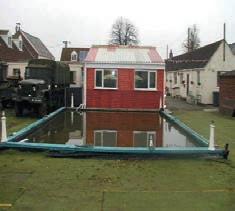







3
• July 2023 www.modelboats.co.uk
Model Boats
EDITORIAL
Editor: Lindsey A mrani
Senior designer: Michael Baumb er
Illustrator: Grahame Chamb er s
Publisher: Steve O’Hara
By post: Model Boats, Mortons Media Group, Media Centre, Morton Way, Horncastle, Lincs LN9 6JR Tel: 01507 529529 Fa x: 01507 3710 66
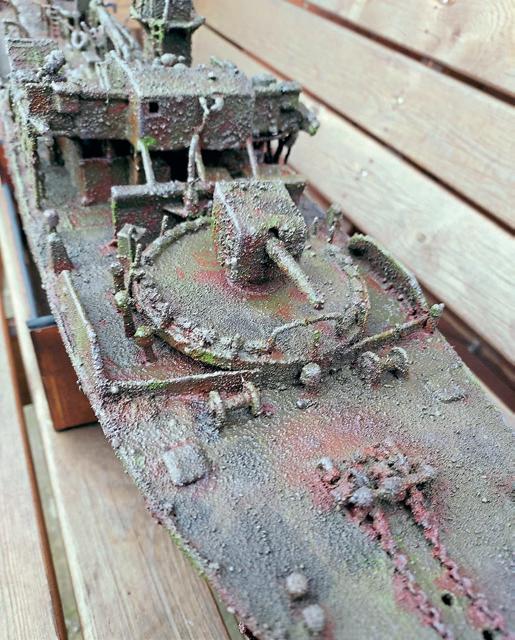


Email: editor@mo delb oat s co uk

CUS TOMER SERVICES
General Querie s & Back Is sue s 01507 529529 – Monday- Friday: 8 3 0 am -5pm
A nswerphone 24hr help @clas sicmagazine s co uk w w w clas sicmagazine s co uk
Arc hive enquir ies: Jane Skay man 01507 529423 jskay man@mor tons co uk
ADVERTISING
Adver tising Sales Executive: A ngela Price aprice @mor tons co uk Tel: 01507 529411
By post: Mo del Boat s Ad ver tising , Mor tons M edia Group, M edia Centre, Mor ton Way, Hornc as tle, Linc s LN9 6JR
PUBLISHING
Sales and Distribution Manager: C arl Smith
Marketing Manager: Charlot te Park
Commercial Director: Nigel Hole
Publishing Director: Dan Savage
Published by: Mor tons M edia Group Ltd, M edia Centre, Mor ton Way, Hornc as tle, Linc s LN9 6JR
SUBSCRIP TIONS
Tel: 01507 529529 – Mon - Fri: 8 3 0 am -5pm
Enquirie s: subscriptions@mor tons co uk
PRINT AND DIS TRIBUTIONS
Printed by: Acorn Web O f f set Ltd Dis tribution by: Sey mour Dis tribution Ltd, 2 Eas t Poultr y Avenue, London, EC1A 9P T
contents nte t
10 Compass 360 L ate s t ho b by and ind u s t r y new s
14 Calypso Br ian K nig ht dive s into t he build of Billing Boat s’ bac k by po pular d emand k it for t he late, g reat Jacq ue C ou s teau’s wor ld -f amou s oceanic re searc h ve s sel
19 WIN one of t hree Calypso beanie hat s Wanna g et ahead? Get a hat!
20 The amazing Amphicar

Peter Koc h - O s bor ne pre sent s ‘t he c ar t hat s w im s’
28 How to tot ally wreck a model
Simon Mur phy t alk s u s t hroug h how to t ur n a seemingly un s alvag ea ble mod el into somet hing a bsolu tely me smer izing
© M or to ns M e dia Gro up 2 0 2 2
A ll rig h t s re s er ve d IS SN 014 0 -2 910
T he Publisher ’s w rit ten cons ent mus t b e ob t aine d b efore any p ar t of t his public ation may b e repro duc e d in any form w hat s o ever inclu ding p hotocopiers and information retrieval s y s tems A ll reas onable c are is t aken in t he prep aration of t he maga zine content s bu t t he publishers c annot b e held legall y re sp onsible for errors in t he content s of t his maga zine or for any los s however arising fro m such errors, inclu ding los s re sulting fro m negligenc e of our s t af f Relianc e plac e d up on t he content s of t his maga zine is at rea der ’s ow n risk Model Boats ISSN 0140 - 2910 is published
Vol. 73 Is sue 872: Jul y 2023
Group M e dia C entre M or ton
H ornc as
L
s L N9 6 J R U K The US annual subscription price is 89USD Airfreight and mailing in the USA by agent named WN Shipping USA, 156-15, 146th Avenue, 2nd Floor, Jamaica, NY 11434, USA Periodicals postage paid at Brooklyn, NY 11256 US Postmaster: Send address changes to Model Boats, WN Shipping USA, 156-15 146th Avenue 2nd Floor Jamaica NY 11434 USA Subscription records are maintained at DSB net Ltd 3 Queensbridge The Lakes Nor thampton NN4 5DT Air Business Ltd is acting as our mailing agent 4
monthly by M or tons M e dia
Way
tle
inc
Idon’t know about you, but as a child I would be glued to the television screen whenever the oceanic explorations made by the late, great Jacques Cousteau and the crew of the Calypso aired, so Brian Knight’s feature about modelling the recently reintroduced Billing Boats Calypso kit for R/C operation brought memories flooding back for me.
See page 56
34 TARDIS bumper boat

Is there a Doctor in the house? Well, not exactly, but we do have our very own ‘mad man with a box’, a.k.a. Ashley Needham
36 Save money with a subscription!
Check out the latest hard copy and digital deals to discover how you can get your favourite magazine for less
38 Spookoiny
Glynn Guest explains how to construct a World War II Russian destroyer from this month’s free pull-out plan

48 I.C. powerboating basics

Derek Owen continues his introduction to this aspect of the hobby, this month considering the aesthetics
52 Flotsam & Jetsam: Taycols targeted
John Parker provides a handy guide to the 1960s’/70s’ model electric motors produced by this British manufacturer


56 Boiler Room
Richard Simpson focuses on the many uses of yet another traditional manual workshop tool
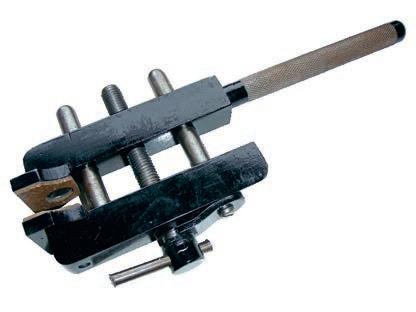
62 Memory Lane: The Stock Market
Dave Wiggins extols the virtues on investing in spares
64 Your Models
More of your brilliant builds showcased
70 Your Letters
Views aired, info shared, and appeals launched
74 Next month
Just three of the reasons you won’t want to miss the August issue of MB
I know from conversations with Jens Henrik Thrane at Billing Boats that he is a highly experienced wreck diver himself, so while I am sure the Calypso is a real favourite of his, I think he’s going to be equally intrigued by Simon Murphy’s article on how to totally wreck a model. As a project this is such a great option for anyone with a scale ship/boat that’s beyond all hope of restoration and, as you will see, the end result can be totally mesmerizing.
That, however, is not where the out of the ordinary stops this month. I love Peter Koch-Osborne’s amazing Amphicar. As some of you may be aware, I formerly edited the title Model Collector, so I was already familiar with this quirky little car, its history and the models of it –although up until now I had only ever come across static display scale replicas rather than working versions that could take to the water.
And then things get even more ‘out there’ with Ashley Needham’s latest incarnation of the bumper car boat. A bit like the TARDIS, though, hopefully you’ll find this issue still manages to pack in plenty for the more traditional modellers amongst you, along with a free pull-out plan and the chance to win one of three smart and snug Calypso beanie hats – perfect for when things get a bit breezy pondside.
Enjoy your read!
Lindsey
See page 62
See page 52
5 WELCOME TO THE JULY 2023 ISSUE OF MODEL BOATS...
• July 2023 www.modelboats.co.uk
Model Boats






















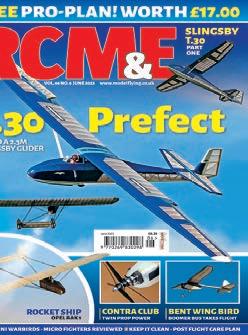



























www.modelboats.co.uk July 2023 • Model Boats 6



















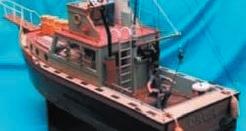


































7 Model Boats • July 2023 www.modelboats.co.uk
























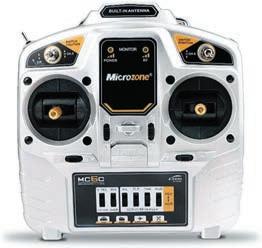































Compass 360

Below: Based on 55ft modular vessels and sold as a two model set (one with sheeted load, the other with an exposed load), these Canal Barges from Model Art Miniatures will soon to be joined by a more modern extended cabin version.


New from Model Art Miniatures
Industrial model making company Model Art Studios (www.modelartstudios.co.uk) has announced the launch of new range of 1:76 scale waterline ships/boats, complementary buildings and harbour installation components. Developed and produced entirely in the UK, all the items in this Model Art Miniatures branded range will be made available in both kit and ready assembled/ pre-painted form.
As moulds are renewed, the certificates of authenticity issued with each product (in kit or finished form) will reflect the limited number and nature of each mould’s production run.
Model maker Duncan Howarth, whose career has spanned 35 years and encompassed countless commercial/industrial models and the publication of numerous subject-related books and magazine articles, explains: “Being an illustrator and industrial artist/designer I have always been captivated by scale models/dioramas, so being asked to collaborate on this completely new Model Art Miniatures range has been a privilege and a thrill.
“As a team we sat down and took a good hard look at precisely what, in this massmarket model economy, was missing. As a result, we came up with an extensive range of multi-media models compatible with dockside dioramas, OO/HO model railways and wargames.
Working with an almost ‘sepia’ colour palette, from original plans and a huge array of photographs, we’ve striven to produce products that not only replicate reality as
closely as possible, within the boundaries of the production process, but which also capture the character/aura/essence of the vessels and scenarios portrayed.
“The Clyde Puffer will be available in several versions, from the initial 1860s’ converted ‘Gabbert Boat’ with simple steam engine on the rear deck, through a 1900s’ Crinan Canal Cruiser and a later War Department commissioned ‘VIC’ boat built before the advent of World War II. Component counts in our kits are deliberately kept low, so as to facilitate the less experienced, and sometimes younger model maker. There is, however, no compromise on quality or detail level.
“The Bristol Canal Tug, inspired by and based on the preserved Mayflower is a triumph of mould and master design, and typical of its type, in use from the 1850s up until the 1960s. It can be built in any one of three versions and only consists of ten parts, including separate bridge and mast components.
“Cast in the finest resin, our modular Canal Barges represent the first of our widening range and are based on 55 ft modular vessels. They come in a pack of two boats: one with a sheeted load, the other with an exposed (unsheeted) load of coal/aggregate. They are soon to be joined by a more modern extended cabin version.
“The Thames Barges, faithful representations of these iconic vessels, are produced in resin, cord and fine timber, and come in both 90 ft and 46 ft versions, both with sails deployed and furled. Currently in development, a Norfolk

‘Wherry’ is also now hot on their heels.
“The Canal Dredger and its ‘butty boat’ come as a set, with the option to rig for a ‘steam shovel’ type configuration or as a ‘drag-line’ boat. An optional ‘dredged’ load is also provided as an insert for the ‘butty’.
“Alongside this boat range, and complementary to them, we now provide a burgeoning range of stone and brick bridges, lock gates/stone caissons and canal/harbour walls.


“All models are to be completed at our installation in the heart of the Potteries. This area, with its ancient creative ethos, has provided the inspiration for the first Pottery Factory model ever produced in 1:76 scale: our ‘Three Sisters’ Bottle-Kiln installation kit. Along with its ‘Factory extension’ add-on, this makes either an incredible ‘stand-alone’ diorama or a stunning addition to any model harbour or railway layout.
“Also currently in development are a brewery, cotton mill, watermill, modern recycling centre with all necessary machinery, and a gigantic range of dock and harbourside accessories.
“Special building/painting commissions can be undertaken by prior arrangement.”
To view the full and extended range of boats and associated objects produced, along with private and commercial commissions undertaken, visit www.modelartstudios.co.uk or Model Art Miniatures on Facebook


If
editor@modelboats.co.uk
you have a news story for these pages, please contact the Editor, Lindsey Amrani, via e-mail at
For the diorama enthusiasts amongst you, the range will also incorporate a large variety of complementary buildings and harbour installation components.
The Canal Dredger and its ‘butty boat’ come as a set, with the option to rig for a ‘steam shovel’ type configuration or portray as a ‘drag-line’ boat. An optional ‘dredged’ load is also provided as an insert for the ‘butty’.
The Thames Barges come in both 90 ft and 46 ft versions, both with sails deployed and furled. A Norfolk ‘Wherry’ is now also in development.
Left: Box artwork for the new Clyde Puffer, which will be available in several versions (see news story for more details).
Signals 10 www.modelboats.co.uk July 2023 • Model Boats
Right: The three different versions of Model Art Miniatures’ Bristol Canal Tug, inspired by and based on the preserved Mayflower.
OUT AND ABOUT
Kirklees MBC Summer Open Day
The Kirklees Model Boat Club will be holding its annual Summer Open Day at Wilton Park, Bradford Road, Batley WF17 8JH from 9.30am to 3.30pm on July 9, 2023.

Visitors will be welcome to sail their own model boats alongside those belonging to members on the club’s lake (please note, steam powered models will need an up-todate certificate and no I.C. or high-performance fast electric
boats can be accommodated), plus there will be static model boat and military vehicle displays, possible trade stands to browse, a massive raffle (in support of the RNLI and which includes an annual subscription to Model Boats as one of the prizes), refreshments served and free on-site car parking.

For more information contact the club’s events planner on 0113 2675790.
Wings & Wheels (and model boats, actually!)
The UK’s longest running annual R/C model show is this year scheduled for the weekend of June 24/25 at the North Weald Airfield in Essex (CM16 6HR).

Despite the name of this show, once again there will be a self-contained area dubbed the ‘Marine Village, complete with a temporary 40ft square model boat display pool, a smaller
BUY THE BOOK
Scharnhorst and Gneisenau

Penned by maritime historian David Knowles and published by Fonthill Media Ltd, this new book provides an authoritive and informed look at the careers of Nazi Germany’s most successful battleships. Illustrated with many rare
and previously unpublished photographs, it covers their most infamous engagements during World War II, including the Channel Dash and the last sea duel between British and German battleships at the Battle of North Cape.
Launched in hardback format and carrying an RRP of £40, the title (ISBN 978-1-78155-887-4) can be purchased directly from the publisher’s website at www.fonthillmedia.com or ordered from your local bookstore.
pool where children and newcomers can get ‘handson’, and a large marquee for club exhibits and for traders supporting our side of the hobby to showcasing their wares.
Tickets at a discounted price can be purchased when ordering in advance online (visit https://www. wingsnwheels.net/buytickets/).
Signals 11 Model Boats • July 2023 www.modelboats.co.uk
CALYPSO
 Brian Knight dives into the build of Billing Boats’ recently reintroduced 1:45 scale kit for the legendary oceanographic researcher Jacques Cousteau’s world-famous research vessel
Brian Knight dives into the build of Billing Boats’ recently reintroduced 1:45 scale kit for the legendary oceanographic researcher Jacques Cousteau’s world-famous research vessel
Adventures in modelling www.modelboats.co.uk July 2023 • Model Boats 12
Adventures in modelling
After 70 odd years of model boat building, consisting of both power and scale, scratch built and kits, and with most equipped for radio control, I’ve probably built enough vessels to start my own private navy! Because I am one of those modellers who enjoys the building more than the operating (although I raced my own designed I.C. power boats for many years) I get bored very quickly when I don’t have a project on the go, so a constant problem (not least to keep me out of my long-suffering wife’s hair) is what to build next. I was, therefore, intrigued by the interview with Billing Boats run in this magazine last year, explaining how the company has updated its kit manufacturing process to incorporate the very latest in cutting-edge technology into the traditional process.

Consequently, I contacted Billings to enquire about the Calypso, a kit I’d always fancied building but which had been off the market for some time. The news was good, as there were indeed plans to reintroduce the Calypso into the range. Initially, I was informed that the Calypso would be available again in the UK in approximately two months but, to my delight, I had an email just a month later informing me that a consignment of kits had reached UK distributors earlier than had originally been anticipated. After a bit of shopping around, I eventually placed an order with the Model Shop Leeds. The staff were extremely helpful, and my kit was dispatched that very same day. It arrived as promised, perfectly packed, the day after. So, after many years of admiring the full-sized vessel, my build could finally begin.
Owing to restrictions of space, I’ve had to omit some of the construction photos I shot along the way. However, for anyone also thinking of embarking on this build, hopefully the most pertinent aspects of the process are illustrated here. Please excuse the background in some of my photos as I live in a small onebedroom flat with a very compact working area. Also, some of the white spots on my model are still awaiting clean up and, in many cases, more sanding and painting.

1
13 Model Boats • July 2023 www.modelboats.co.uk
Diving in
To get started, let’s first take a look at what’s in the box (see Photo 1), although please note that the pre-formed hull included has been removed in this particular shot so as to afford a better view of everything else. The first thing I noticed was that this kit features no white metal parts: all fittings are either beautifully turned brass (see Photo 2) or plastic components, the latter supplied still attached to their sprues. It also needs to be noted that there are no pointto-point assembly instructions; instead, a comprehensive instruction manual features detailed drawings in which components are individually numbered to tally with both a correspondingly numbered parts list and all the directions on the plan provided. I found the brass parts take a little more studying to confidently identify, although, in fairness, that may just be me, as the drawings of them are good.


Not only are all of the above mentioned instructional documents accessible on Billings’ website (www.billingboats.com – just key Calypso into the site’s search engine) but you can also view numerous photographs of both the full-sized prototype the kit is based on and the resulting model on completion, which I found enormously helpful for reference purposes during my build.
Preparing the hull


As always, I started with the hull, firstly trimming off any excess plastic from the ABS molding before fitting the deck supports. As the hull is very flexible, I decided to add two cross braces to strengthen it at this point. I always complete all hardware and electrical work before I even think of fitting or working on the deck, but an essential task before mounting anything in the hull is to ensure you have access for any items to be added later (such as a battery) or indeed so that you can carry out maintenance of the equipment installed. The easiest way of doing this is to remove the deck from the sheet, dry fit it to the hull, and mark the point where your motors and servos are to be fitted.
In Photos 3 and 4 you can see the completed external part of the hull, with its underwater primer already applied. Painting would be carried out later, after the decks had been fitted and the hull stabilized. You will observe, however, that at this stage I had fitted the rub rails and deck trim. When fitting the shafts and rudder post, I knew that, because vacuum-formed plastic hull is semi-flexible, epoxy would have proved too brittle and often doesn’t always adhere well (these same failings also apply to superglue). In this instance, therefore, I opted to use an industrial glue gun sourced
from Gluegunsdirect in conjunction with a TECBOND 1942 glue stick, thereby ensuring everything would remain firmly adhered and waterproof.
R/C installation
Although the gear itself is not included, this kit is specifically designed with R/C installation in mind. How you decided to equip your model is, of course, entirely up to you.There are many ways to mount motors, and brushed and brushless types often require different solutions. I have used brushless motors in my faster boats but prefer brushed in this type of model (yes. I’m an old ‘stick in the mud’ and far more comfortable with what I know best!). I make most of my engine mounts using a double-sided fiberglass PC board (I find this gives the mountings strength and yet a little flexibility), with the vertical portion aligned and soldered. In my photos you can view the construction and installation of my battery box (Photo 5), modified front deck hatch to mount the on/off switches (see Photo 6) and completed mechanicals and electronics (see Photo 7). You’ll note that apart from the Nimh main battery up forward, there’s 4 x AA rechargeable cells and 1 x AA dry cell. These are for lighting and the rotation of the main rota on the helicopter consecutively.

2 4 6 3 5
“
Adventures in modelling www.modelboats.co.uk July 2023 • Model Boats 14
ere are many ways to mount motors, and brushed and brushless types often require different solutions”
I’m very fortunate in that my trade was in the electrical and electronics industry, but a very important task, and one that is often sadly overlooked by many modellers, is the accurate lining up of shafts to the motor. Correct alignment gives better performance, less battery current drain, less noise and less wear and tear. A tip if using a double coupling or any flexible coupling is to fit a piece of tubing around the extended coupling, although I’m sure there are many other exceptional methods employed by innovative modelers out there.
Planking the deck
With the internals complete, let’s return to the deck. The kit illustrations show the planking in the length supplied. I, however, chose to plank as I normally do, to the length of the prototype. There’s always controversy when it comes to planking to the correct (albeit scaled down) size but searching the web for the original minesweeper on which the Calypso was based revealed a mine of vastly conflicting information and images, so in the end I could only resort to taking a little ‘creative license’ here, settling on a scale

length of 140mm. This gave me a stagger of four planks. At this stage, I adopted my preferred method of planking: that is, using thin double-sided tape and black cord for the caulking (see Photo 8) and the main deck (see Photo 9). The eagle-eyed modellers amongst you may have noticed that I didn’t stick down the cord too well at bottom right! Some may question the lasting effect of fixing planking in this way, but I have models that have been in constant use for 20 years or more and their planking hasn’t lifted yet! Just to be sure, though, I give my planking


8 7 9
15 Model Boats • July 2023 www.modelboats.co.uk
“A very important task, and one that is often sadly overlooked by many modellers, is the accurate lining up of shafts to the motor”
Adventures in modelling
two to three coats of Rustins’ sanding sealer and three coats of clear satin varnish. That said, I have encountered challenges with the above method, finding that when the joint of my tape meets with a plank joint, the cord then won’t stick. A young but very intelligent modeller, however, recently offered me some advice here. He recommended mounting the double-sided tape diagonally to the run of the planks – a method I will definitely try in the future. Clearly, you never stop learning!
When fitting the main deck, I used lots of elastic bands and clips to hold it down (see Photo 10).


The bulwarks needed some detailed assembly and painting (see Photo 11) and a lot of tidying up was required before the completed cabin (see Photo 12) could be fitted. Magnets have always been my first choice for holding down a superstructure (note the holding magnets indicated in my photo by two red arrows). Photo 13 illustrates the completed forward deck, with the modified hatch and bulwarks (see Photo 13). Note, too, the thin 0.5 mm x 3mm plastic polystyrene strip on the edge of the auxiliary decks, which I feel gives a better edge and finish than just painting. I completed the upper cabin and wheelhouse shown partially finished in Photo 14 with the installation and wiring of the navigation lights. This required a considerable amount of care,
Flotation test
What I still needed to undertake at this point was a flotation check. I had expected, based on past experience, that I would need extra ballast, but was a little surprised by the result of my calculations. These suggested 1.2 kg would be required to stabilize and compensate for the extra top weight (courtesy of the brass fittings) and to ensure the model would sit correctly on its scale waterline. I therefore had to cut an aperture in between the motors in the baseboard so that I could lay the extra lead weight in the bottom of the hull. Fortunately, my estimation proved correct, as shown in the test sailing photos at the end of this article.
11 10 Adventures in modelling www.modelboats.co.uk July 2023 • Model Boats 16
Superstructure assembly

There are numerous sections (or what I call ‘mini kits’) to assemble for the superstructure, and I will show some of these here, although not necessary in the order in which they were constructed. Some of the items that detail the superstructure, such as the helicopter floats and the side tanks, are required to be built up of vacuum-formed components. Now, the truth is I’ve never been keen on vacuum-formed parts, as I find they rarely join together satisfactorily. I therefore discarded these in favour of carving my own interpretations in wood. In no way is this a criticism of the quality of Billing Boats’ kit, however, as I know there are many modellers out there who will be only too happy to work with the vacuum-formed items supplied and who will no doubt achieve far better results from them than I ever could.
I then jumped back to the main cabin to fit the removable upper deck supports, small link mounts glued and checked finished and






Adventures in modelling
painted, along with the pillars in (see photo 15) The pillars and supports needed very careful assembly to ensure a completely flat area on which to sit the removable deck, especially as this was to hold a large part of the boat’s detail (see Photo 16). As previously mentioned, the majority of the larger plastic parts (which, incidentally, are beautifully molded) are supplied on sprues (see Photo 17), such as those for the helipad, which you can see following assembly in my photographs.
You may have noticed by now that I don’t necessarily build in the kit manufacturer’s intended sequence. By my own personal choice, therefore, at this point I decided to tackle the rear hatch, along with a strong magnetic hold down. This is because this has to hold some weight along with the helicopter and helipad. so I fitted a fairly strong magnet with a small magnetic disc (see Photo 18). Because there were items to be mounted below the helipad,
which still needed to be assembled, I then concentrated on constructing the various modules/’mini kits’ (see Photo 19).


The main mast and rigging
We now arrive at what I found the most challenging task: the main mast. I had to make some modifications here, notably the size of the lamp platform, enlarged to mount the working lamp housings. I am sure Billings originally intended the mast assembly to be part of the cabin, but I decided to change the mounting rods to hollow brass tubes, which I mounted in new positions, with the object of running cables inside to power the lights.
13 15 17 14 16 18
Photo 20 shows some of the construction
19
“Some may question the lasting effect of fixing planking in this way, but I have models that have been in constant use for 20 years or more and their planking hasn’t lifted yet!”
17 Model Boats • July 2023 www.modelboats.co.uk 12
details. The two outside aerials with the football shape tops are made to slide down (as shown) for transport and raised for display. I also omitted some of the standing and running rigging, because, as this is to be an operation model, I felt the extra cording would simply get in the way.
Detailing
The assembly of the helicopter itself was very straightforward. The installation of a motor to operate its main rota, however, required a little more thought. This was eventually achieved by using a small motor from an old cell phone (there to power the vibration mechanism). I chickened out getting the tail rotor working too!
Photo 21 shows all the main assembly complete but awaiting detailing, a prospect I’d looked forward to right from the start. My only small gripe here concerns the transfers supplied with the kit. Mine broke up on removal. Fortunately, I’d taken the precaution of printing multiple copies with a laser printer on very thin, clear, adhesive A4 vinyl paper (available from MDP vinyl suppliers). I also added a little light relief on the lifebelts by including the ship’s name (see Photo 22)
Photo 23 shows Calypso being displayed on our Yeovil & District Model Boat Club stand at a local model show. The wealth of detail incorporated in this newly returned to the market Billings kit caused quite a stir, and I have to say hats off to the whole team at Billings for all the work they’ve put into totally reinvigorating the brand since it was taken under the wing of the Vestergaard Group.

After sales support
The kit for the Calypso is designated a skill level best suited to experienced modelers, and I have to




concur with this. Make no mistake, though, this is definitely a kit worth all the time and effort involved, and rest assured you will get full and ongoing support from Billings should any be needed along the way. After sales support is exemplary. For example, during construction I discovered I was missing three small brass items, but a quick email to Billings received an almost instant response, with the necessary parts immediately despatched, and arriving, with an apology, within days.
Final touches
My final pictures show Calypso’s problemfree maiden voyage at our club’s sailing venue behind the Halfway House Inn Country Lodge in Yeovil, Somerset (see Photo 24). I’d never normally launch a model without first adding at least a helmsman but with Calypso this rule had to be broken due to initially being unable to find any figures of the correct type and scale. Fortunately, thanks to the discovery of a fairly new scanning company – which produces a wealth of figures in all scales, and a bit of help from my artistic daughter (my own abilities when it comes to painting figures being somewhat dubious), I’ll soon have a full complement of crew, including Jacques-Yves Cousteau himself! ●
20 22 24 21 23
in modelling www.modelboats.co.uk July 2023 • Model Boats 18
Adventures
ONE OF THREE CALYPSO BEANIES! WIN
As a neat little extra, and a nod to the late Jacques Cousteau, Billing Boats’ will be including one of the trademark red woolly divers’ hats always sported by this world-famous oceanographer and his team in each example of the first, limited edition, run of its back by popular demand kit for the Calypso. This month, however, thanks to the generosity of kind folks at Billing Boats, we’ve got three of these smart little beanies up for grabs!


Why the red divers’ hat?
Those of you who remember the wonderful TV documentaries produced by the now legendary underwater explorer Jacques Cousteau aboard the Calypso will recall that he and his diving team always wore these red divers’ hats. So, what’s the story behind them?
Well, during the early days of underwater exploration, when divers had to be enclosed in canvas suits and copper helmets, they needed to wear something warm on their heads. The air that was continuously blown into their helmets for them to breathe was very cold; even colder than the surrounding water, because by the time it was fed down via the long air hose through the low temperature depths it also, as it entered the helmet, expanded slightly, thus chilling it a little more. What’s more, the air needed to be deliberately blown around the helmet to ensure effective ventilation, thus preventing
any build-up of expired air and avoiding any condensation forming on the viewing ports – which added a ‘wind-chill’ factor to the cooling effect.
Early divers would have used whatever the common form of thermal head protection around was at the time helmet apparatus was introduced (circa1840s). This tended to be a red woolly cap commonly used by sailors back then, and especially by the oyster fishermen from Whitstable in Kent, England, the ‘home’ of helmet diving. A quotation referring to these hats came about in 1851 when someone described the oyster fishermen tied up at London’s Billingsgate fish market, selling their loads of oysters:
“Who’s for Baker’s?” “Who’s for Archer’s?” Who’ll have Alston’s?” shout the oyster merchants and the red cap of the man in the hold bobs up and down as he rattles the shells about with a spade”
Contemporary paintings of sailors and boatmen also illustrate the common use of the red woolly cap.
The caps themselves were of the ‘sleeve’ pattern, in that they were knitted as a sleeve. The two ends were then stitched up and the sleeve half-pulled inside-out, making it a doubled layered sleeve, now open at one end. The open end was pulled over the head and the lower edge was turned up to provide a four layered band around the forehead. The red divers’ cap tradition was therefore established at the same time as diving
helmets were introduced at the oyster fishing port of Whitstable, UK.
It’s interesting to also note that the famous British diving equipment manufacturers of the 19th century, C.E Heinke & Co and Siebe Gorman & Co, included the red woolly cap in full sets of the diving apparatus they sold
How to enter
All you have to do to be in with a chance of bagging one of these beanies is complete the entry form included on this page, cut it out (photocopies of the form will be acceptable for those of you who do not wish to deface your magazine) and mail it back to us at:
BB Calypso Beanie Hat Prize Draw Model Boats, Mortons Media Group, Media Centre, Morton Way, Horncastle, Lincs LN9 6JR
Please note, the closing date for entry submissions will be Friday, July 21, 2023 Good luck, everyone!
TERMS & CONDITIONS
Competition closes Friday, July 21, 2023. There are no cash alternatives available. Terms and conditions apply. To view the privacy policy of MMG Ltd (publisher of Model Boats) please visit www.mortons. co.uk/privacy
Postcode: Tel No: Email: Calypso Beanie Draw
Address: To further explore the Billing Boats range visit, www..billingboats.com 19 Model Boats • July 2023 www.modelboats.co.uk EXCLUSIVE PRIZE DRAW
Name:
THE AMAZING AMPHICAR


Peter Koch-Osborne explains why and how he set about creating his very own scaled-down but fully working scratch build of this early
Searching around for a winter scratchbuilding project I stumbled onto the Amphicar. This was an amphibious car built in Germany in small numbers in the early 1960s (see Photo 1); most were exported to the US. Contemporary reviews said it was neither a very good car nor was it a very good boat, but it was a boon for anyone living on a small island! I wanted a project that was ‘a bit different’ and one that would throw up design and constructional problems in need of solving; in this regard the build certainly did not disappoint.
I fished around on the internet for plans and information and there was sufficient available to make a scale model, and yet more poking around on the social media revealed that a model railway acquaintance of mine actually owned an Amphicar!
The first problem was determining the scale. This was governed by the availability of wheels, to say nothing about the eventual size of the model. I approached the model car retailers who were singularly unhelpful, stating they couldn’t advise on a specific project. A bewildering choice of components
is available, and partly due to the lack of online dimensional information, I was quickly out of my depth. Eventually, 1:14 truck front wheels were located, having roughly the correct proportions, tyre width, hub to tyre size ratio, tread pattern and so on. This determined the scale of the car, as the 84 mm overall tyre diameter related to 1:7.8. The model is around a manageable 560 mm long x 200 mm wide. The readily available complete front and rear axle components were too wide for my model, so I would have to use some ingenuity to sort out the road drive train and Ackerman steering.
1
60s’ hybrid, billed back in its day as the “sportscar that swims”
Double take at the lake www.modelboats.co.uk July 2023 • Model Boats 20
“I wanted a project that was ‘a bit different’ and one that would throw up design and constructional problems in need of solving; in this regard the build certainly did not disappoint”





















































































































































































































 Brian Knight dives into the build of Billing Boats’ recently reintroduced 1:45 scale kit for the legendary oceanographic researcher Jacques Cousteau’s world-famous research vessel
Brian Knight dives into the build of Billing Boats’ recently reintroduced 1:45 scale kit for the legendary oceanographic researcher Jacques Cousteau’s world-famous research vessel






























